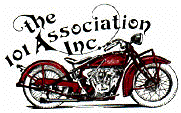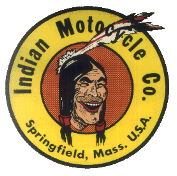"I hope I mounted it in the right direction. The axial load comes from the transmission side." You are right if I get what you mean, the load direction comes from the transmission side. Sort of...The axial load is from when you depress the clutch pedal and it is pulling on the clutch. But the main load is severe from the gear drive on the clutch basket as the clutch basket is positioned off-side of the bearing.
The gears inside the gearbox is not pushing in either direction as they are straight cut. The problem is a combination of issues that decide the wear and axial play of the bearings. Excess play in the bushings on either side will allow clutch basket and/or sprocket gear to tilt and that accelerate bearing wear, together with the weak thin ball bearing's rapid wear from chain whip, that all will result in more side play at mainshaft.
With a bearing that is set up correctly there should be very little tilting movement at the clutch basket. A plain ball bearing has a very small play when new but since the basket is large diameter and the bearing is offside to the basket, the small play in a new bearing can be felt, but only just!
A tapered roller bearing should be set to zero or pre-loaded so there is no tilting or up-down play at all. The bearing rolls are at risk of shudder or vibration if a bearing of that kind is set with play. Since the mainshaft has to have a certain side play in order not to pre-load the thin ball bearing at the other end, a tapered roller bearing is not at all ideal to use!
Original in both types (small and large clutch) gearboxes there was a angular contact ball bearing that has to be axially limited by the main shaft thrust washers, but could take a certain sideplay without going sloppy. That is why side play is very important to set correct, in conjunction with that kind of bearing.
The contact angle of a Indian original ball bearing (Fafnir or Timken) was 15 degrees so it could take some wear or larger axial play in the mainshaft, without getting the radial play out of hand, but such shallow bearings is not made anymore in the size needed for our gearboxes. Modern angular contact ball bearings is made with 40 degrees so a little axial play makes a huge difference in radial play (ten times the difference, measured one time ago by George Yarocki) so clearly they are not suitable to use.
The bearing situation is a problem in the older gearboxes where the bearing is mounted from the outside. Those bearings are of a non standard dimension. I have seen for sale some specially ground bearings that I assume are ball bearings. Or machining has to be done on the case to fit a standard size bearing. There are several ways to fit a standard size bearing there...
Newer boxes where the bearing is mounted from the inside has a bearing size of standard dimension and a common, preferable 6207 2RS ball bearing fit right in. Of course the gearbox may work with either the 40 deg. angular contact ball or roller bearing when tight, but only for a short while.
With plain ball bearings on both sides, the side play in the mainshaft is good to set to specifications, but not essential, as the clutch bearing is not dependent on support.


